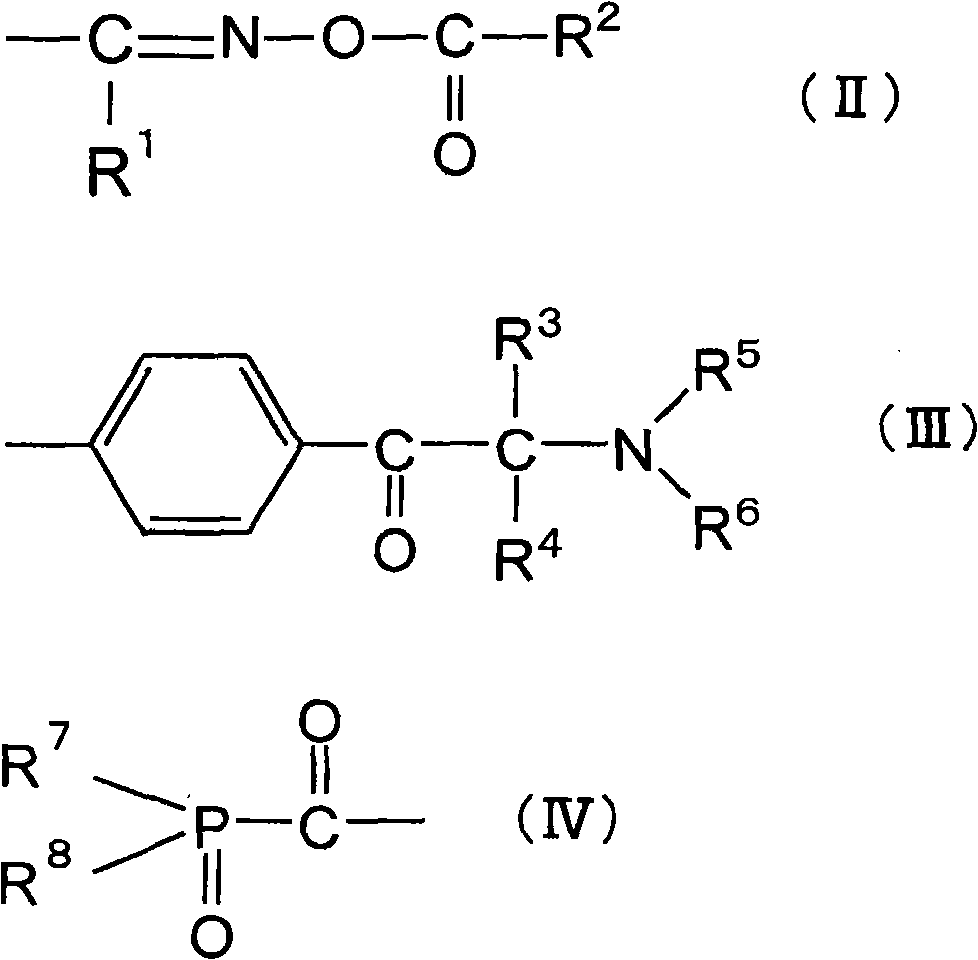Photosensitive resin composition, and dry film and printed wiring board using the same
A technology of photosensitive resin and composition, applied in the field of photosensitive resin composition, can solve the problems of reduced insulation resistance of cured coating film, difficult completion of reaction, insignificant effect of electrical insulation, etc., and achieves excellent touch dryness, Effects of high ion migration resistance and excellent electrical insulation
- Summary
- Abstract
- Description
- Claims
- Application Information
AI Technical Summary
Problems solved by technology
Method used
Image
Examples
Embodiment
[0176] The present invention will be specifically described below by showing examples and comparative examples, but of course the present invention is not limited to the following examples. In addition, the following "parts" and "%" refer to mass standards unless otherwise specified.
Synthetic example 1
[0177] Synthesis example 1 (synthesis of carboxyl group-containing resin (B))
[0178] 360 g (0.45 mol) of polycarbonate derived from 1,5-pentanediol and 1,6-hexanediol as a compound having two or more alcoholic hydroxyl groups were charged into a reaction vessel equipped with a stirring device, a thermometer, and a condenser Diol (manufactured by Asahi Kasei Chemicals Corporation, TJ5650J, number average molecular weight 800), 81.4 g (0.55 mol) of dimethylolbutanoic acid, and 11.8 g (0.16 mol) of n-butyl as a molecular weight regulator (reaction terminator) alcohol. Then, 200.9 g (1.08 moles) of trimethylhexamethylene diisocyanate was added as an isocyanate compound without an aromatic ring, heated to 60°C while stirring, then stopped, and when the temperature in the reaction vessel began to drop, it was heated again. Stirring was continued at 80°C, and the absorption spectrum of the isocyanate group was confirmed by infrared absorption spectrum (2280cm -1 ) disappears, t...
Synthetic example 2
[0179] Synthesis example 2 (synthesis of carboxyl group-containing resin (B))
[0180] 2400 g (3 moles) of polycarbonate diol derived from 1,5-pentanediol and 1,6-hexanediol (manufactured by Asahi Kasei Chemicals Corporation, TJ5650J) were charged into a reaction vessel equipped with a stirring device, a thermometer, and a condenser. , number average molecular weight 800), 603 g (4.5 moles) of dimethylolpropionic acid, and 238 g (2.6 moles) of 2-hydroxyethyl acrylate as a monohydroxy compound. Then, 1887g (8.5 moles) of isophorone diisocyanate as a polyisocyanate was added, heated to 60°C while stirring, and then stopped, and when the temperature in the reaction vessel began to drop, it was heated again, and the stirring was continued at 80°C. The absorption spectrum confirms the absorption spectrum of the isocyanate group (2280cm -1 ) disappears, the reaction ends. Carbitol acetate was added so that the solid content would be 50% by mass. This is referred to as B-2 varni...
PUM
| Property | Measurement | Unit |
|---|---|---|
| Dispersion | aaaaa | aaaaa |
Abstract
Description
Claims
Application Information
 Login to View More
Login to View More - R&D
- Intellectual Property
- Life Sciences
- Materials
- Tech Scout
- Unparalleled Data Quality
- Higher Quality Content
- 60% Fewer Hallucinations
Browse by: Latest US Patents, China's latest patents, Technical Efficacy Thesaurus, Application Domain, Technology Topic, Popular Technical Reports.
© 2025 PatSnap. All rights reserved.Legal|Privacy policy|Modern Slavery Act Transparency Statement|Sitemap|About US| Contact US: help@patsnap.com



